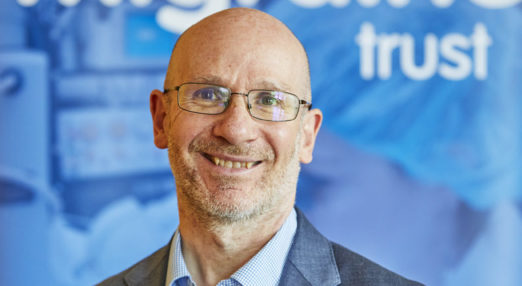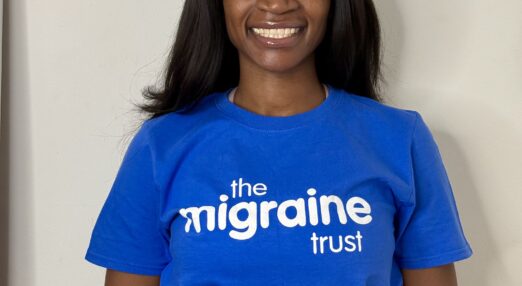I’m a professional basketball player who has represented both England and Great Britain, including competing at the 2018 Commonwealth Games. Alongside my sporting career, I’m the founder of Why Not I, an organisation dedicated to improving mental health awareness and education, particularly within inner-city communities. These are achievements I’m incredibly proud of—but what many people don’t realise is that migraine almost ended my career before it really began.
My migraine journey started early—around eight or nine years old. I’d sometimes have 4 or 5 attacks a week, and I was missing loads of school. Coming from a single-parent household, it added stress to an already tough situation. My mum, who also occasionally had migraine attacks, did everything she could to support me. But back then—late 90s, early 2000s—there was so little understanding around migraine. I didn’t know anyone else going through it, and it felt extremely isolating.
I remember being referred for a CT scan around age 12 or 13, and the doctor mentioned they were checking for a brain tumour. I was terrified. But at the same time, I thought—maybe if they find something, I’ll finally have an answer. That uncertainty was heavy.
Migraine didn’t just affect my physical health—it really affected my mental health.
Once I was diagnosed with migraine, I began the long journey of trial and error—tracking triggers, changing my diet, staying hydrated, trying medications. Some things helped, like knowing when the black spots in my vision appeared, I had to act fast—hydration, caffeine, ice packs, getting to a safe space. But migraine doesn’t always care about your routine. And some approaches I was offered just didn’t help—like visualizing blue skies during an attack, when I could barely stand up from being sick. I had to laugh, even in the pain.
Migraine didn’t just affect my physical health—it really affected my mental health. Attacks would bring on anxiety, and eventually that anxiety started bleeding into every area of my life. I went through phases where I didn’t even want to leave the house.
I’d throw up, then go straight back on the basketball court.
 At 17, I moved to the US on a basketball scholarship to study psychology. The pressure was real—new country, full schedule, trying to prove myself as an athlete. On top of that, my dad had just been murdered, and I found out right before I boarded the plane. I didn’t process it, I just buried it. All of that trauma added to my migraine and overall health struggles.
At 17, I moved to the US on a basketball scholarship to study psychology. The pressure was real—new country, full schedule, trying to prove myself as an athlete. On top of that, my dad had just been murdered, and I found out right before I boarded the plane. I didn’t process it, I just buried it. All of that trauma added to my migraine and overall health struggles.
I kept pushing through—sometimes dangerously. I’d get attacks before games or on long road trips. My coaches carried energy drinks, painkillers, and ice packs for me. I’d throw up, then go straight back on the court. One time, I saw the black spots coming but played anyway— I ended up hitting my head after colliding with another player. But in my head, I was thinking: this is a £50k scholarship, I have to play.
My teammates saw the toll it took on me even when I tried to hide it. We lived together, and they knew when I was having an attack. They recognized when I wasn’t myself—when I couldn’t laugh or be the usual version of me. They’d grab ice or painkillers or just keep the dorm quiet.
My pro career eventually took off and I went on to play in Germany, Sweden, Iceland, Saudi Arabia and more. But migraine came with me. In Iceland, it became unbearable—the air pressure changes triggered constant attacks, and I ended up having to leave.
If I’d seen someone like me talking about this growing up, it could’ve changed so much.
Now, things are better. I still get attacks, but nothing like before. I’ve learned how to manage my stress and anxiety in ways that have made a big difference. For a long time, I didn’t feel like I had the space or platform to talk about it—but now I do. And I realize how much representation matters. If I’d seen someone like me talking about this growing up, it could’ve changed so much.
Migraine can make you feel helpless—like life’s over. There were so many times I felt like quitting. But I’m glad I didn’t. Young people today need to see that there’s hope—that even in the middle of it all, there’s a way forward.
We’re all on our own journey with migraine, but hopefully my story reaches someone who needs to hear it.





